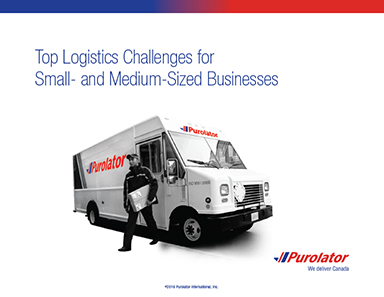Top Logistics Challenges for Small- and Medium-Sized Businesses
Small- and mid-sized businesses face unprecedented challenges in adapting their supply chain practices to meet changing customer expectations.
When a Tennessee-based manufacturer of industrial-grade tools decided to close its Canadian distribution center and rely on its U.S. facility to service the Canadian market, it thought it had a workable solution in place to ensure adequate inventory levels to meet the needs of its growing customer base.
But the company soon realized it had misjudged the volume of inventory it would need. Two things quickly became apparent:
First, the company would need help sourcing inventory in Canada. And second, the high-profile logistics provider that had wooed the company with promises of top-tier customer service was nowhere to be found.
This example illustrates some of the logistical challenges small- and medium-sized businesses routinely face: While demand exists for their products, and opportunity for growth may be strong, their comparatively small size can prevent smaller companies from registering on their logistics provider’s radar screen.
As a result, businesses can miss out on logistics innovations that could help them operate more efficiently and the high levels of guidance and planning necessary to succeed.
Improve efficiency through technology
How then can smaller-sized businesses – which according to the Small Business Administration account for 99 percent of all U.S. businesses – take advantage of technology and other opportunities to improve efficiency and better serve their customers?
Many businesses, for example, would be pleased to learn that technology solutions can be highly affordable and customized to meet their budget.
The first step, of course, is for a business to seek out information about industry best practices and learn from others’ experiences. It’s quite possible that a solution already exists for a business’s top challenges.
The following discussion focuses on key transportation and logistics challenges facing today’s small businesses. Each is linked to an overall goal of improving efficiency and customer service at a time of heightened demand for flexibility and low-cost shipping. And as each topic reveals, integral to any service upgrade will be an experienced logistics partner. The right logistics partner will help you put a strategy in place to help your company achieve efficiencies previously unthinkable.
What’s Related




Favorites





